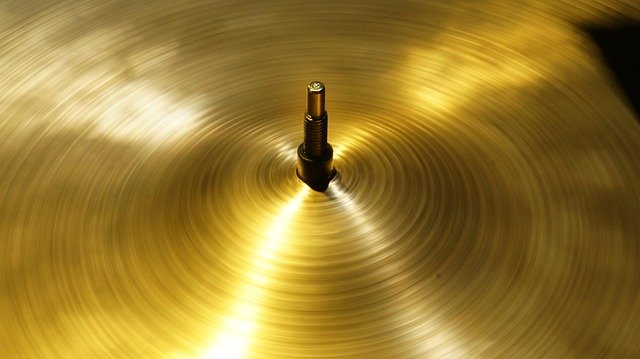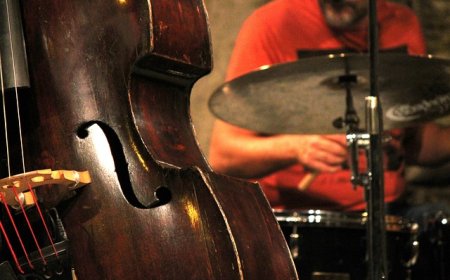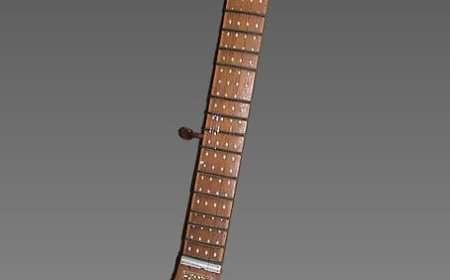Cymbal Facts for Students | Learn How Cymbals Work & Their Role in Music
Discover how cymbals work, their parts, history, types, and how to play them. Learn about famous cymbal players and fun facts in this student-friendly guide.

🥇 Introduction
Cymbals are some of the most eye-catching and ear-catching instruments in the percussion family. They create a crashing, shimmering, or sizzling sound that adds excitement, energy, and texture to music. From marching bands and orchestras to rock concerts and jazz clubs, cymbals play a vital role in music all over the world.
🎶 What Are Cymbals?
Cymbals are round, metal percussion instruments that are usually made from a mix of copper, tin, and sometimes silver. They produce sound when they are struck together or hit with a stick, mallet, or hand. Depending on how they are played, cymbals can create everything from loud crashes to soft, gentle swells.
There are many different types of cymbals, each with its own sound and use:
Crash cymbals – Create a loud, explosive sound
Ride cymbals – Used for keeping a steady rhythm, especially in jazz and rock
Hi-hats – Two cymbals on a stand that open and close with a foot pedal
Suspended cymbals – Hung on a stand and played with mallets or sticks in concert bands or orchestras
Splash cymbals – Small and used for quick, sharp effects
China cymbals – Have a trashy, explosive sound and unique shape
Cymbals can be played in many ways and are used in bands, orchestras, drum sets, and marching percussion.
🧩 Parts of a Cymbal
While a cymbal may seem like just a flat disc, each part has an important role in shaping its sound:
Bell (Cup) – The raised center of the cymbal. Striking the bell creates a clear, high-pitched "ping" sound.
Bow – The curved surface surrounding the bell; this is the main striking area.
Edge (Rim) – The outermost part of the cymbal, used for crashing or accenting.
Hole – The center hole is used to mount the cymbal on a stand or hold with a strap for hand-played cymbals.
The size, shape, and thickness of a cymbal affect how loud, bright, or dark it sounds.
⚙️ How Do Cymbals Work?
Cymbals produce sound through vibration. When a cymbal is hit, its metal surface vibrates rapidly, pushing air in waves that we hear as sound. The type of sound depends on:
How the cymbal is struck (with a stick, mallet, or another cymbal)
What part is struck (bell, bow, edge)
The size and thickness of the cymbal
Whether the cymbal is dampened or allowed to ring
In a drum set, cymbals are mounted on stands and struck with sticks or brushes. In an orchestra or marching band, crash cymbals are often held by hand and smashed together with a dramatic motion.
📜 History of Cymbals
Cymbals are among the oldest musical instruments in history, dating back to ancient civilizations like Mesopotamia, Egypt, and China over 3,000 years ago. They were used in religious ceremonies, military events, and royal celebrations.
The modern cymbal was developed in Turkey by the Zildjian family, who began making cymbals in the 1600s. Their name is still one of the biggest in cymbals today.
Cymbals entered Western classical music in the 1700s, used by composers like Mozart and Beethoven for dramatic effects. In the 20th century, cymbals became a key part of jazz, rock, pop, and marching bands, where they continue to shine today.
🥁 Famous Cymbal Players
Many famous drummers are also known for their creative and powerful cymbal playing:
Buddy Rich – Jazz drumming legend with sharp cymbal accents
Neil Peart – Rock drummer for Rush known for using many cymbals
Tony Williams – Jazz great known for his expressive ride cymbal work
Sheila E. – Pop and Latin percussionist with dynamic cymbal use
Chad Smith – Drummer for the Red Hot Chili Peppers, famous for energetic hi-hat and crash work
These musicians show how cymbals can add color, energy, and rhythm to music.
🎶 Learning to Play Cymbals
Cymbals are often one of the first percussion instruments students try in band or music class. Learning to play cymbals includes:
Holding and crashing them properly (for concert or marching cymbals)
Learning stick technique for ride, hi-hat, and crash cymbals in a drum set
Practicing dynamics—how to play loudly or softly
Learning to play with precision and timing
In a band, cymbal players need to hit at the exact right moment, often with dramatic impact. In a drum set, students learn how to use cymbals to keep the beat or add excitement.
😄 Fun Facts About Cymbals
The word “cymbal” comes from the Greek word kymbala, meaning “little bowl.”
Some cymbals are hand-hammered to shape their sound.
Cymbals can be as small as 6 inches or as large as 26 inches across!
The hi-hat lets a drummer play with both hands and feet at the same time.
In marching bands, cymbal crashes are often choreographed with visual flair.
Famous cymbal makers include Zildjian, Sabian, Meinl, and Paiste.
👧 Kid-Friendly Summary
Cymbals are shiny metal discs that make a loud crash or soft shimmer when you hit them. You can play them by banging two together or hitting them with sticks. They’re in marching bands, rock bands, and even big orchestras. Cymbals help keep the beat and make music more exciting—especially when something dramatic is about to happen!
📚 Vocabulary Words
Cymbals – Metal percussion instruments that are struck or crashed to make sound
Crash Cymbal – Cymbals that make a loud, explosive sound
Ride Cymbal – A larger cymbal used to keep a steady rhythm
Hi-hat – Two cymbals mounted on a stand that can be opened or closed with a foot pedal
Bell (Cup) – The raised center part of a cymbal
Bow – The curved surface area between the bell and the edge
Mallet – A padded stick used to gently play cymbals in concert music
Dampening – Silencing or muting a cymbal to stop the sound
❓ Interactive Quiz
1. What are cymbals made of?
A. Wood
B. Plastic
C. Metal ✅
D. Rubber
2. What part of the cymbal makes a “ping” sound when struck?
A. Edge
B. Bow
C. Bell ✅
D. Hole
3. What are two cymbals played together on a foot pedal called?
A. Crash cymbals
B. Hi-hats ✅
C. Ride cymbals
D. Splash cymbals
4. Who are cymbals usually used by?
A. Only guitarists
B. Only singers
C. Percussionists ✅
D. Violin players
5. What is the main job of a ride cymbal in a drum set?
A. To play melodies
B. To crash loudly
C. To keep a steady rhythm ✅
D. To play like a bell



















































